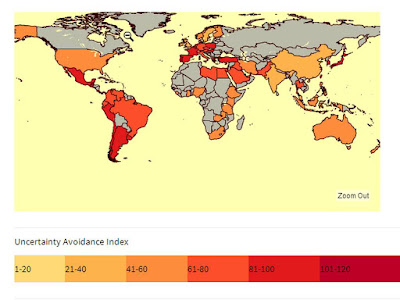Hofstede produced his model through the data he collected when studying IBM employees. From 1967 to 1973 he gathered data on cross-cultural differences and the implications between 100,000 employees over 64 countries.
Hofstede's model consists of five dimensions, originally only having four, but a fifth was added to include Asian countries. These five dimensions are as follows:
This model can be used in organizations around the world for communication, negotiation, management, and marketing. It has become and integral piece of cross-cultural communication.
This is not only an important model, but it has inspired others to formulate more models as well.
The purpose of this web page is to convey how the model works, by first explaining each individual step, then look at the application of the model in real life examples. There will then be a short quiz to test users on their comprehension of the topic.
Comparing Countries
Importance in Business
*Sources
This is not only an important model, but it has inspired others to formulate more models as well.
The purpose of this web page is to convey how the model works, by first explaining each individual step, then look at the application of the model in real life examples. There will then be a short quiz to test users on their comprehension of the topic.
Comparing Countries
Importance in Business
*Sources



